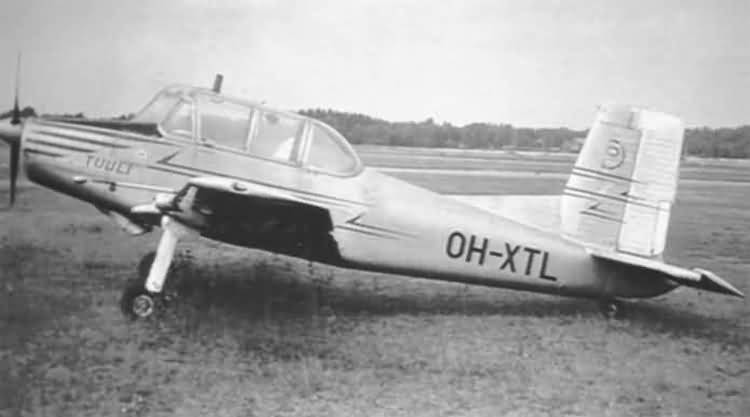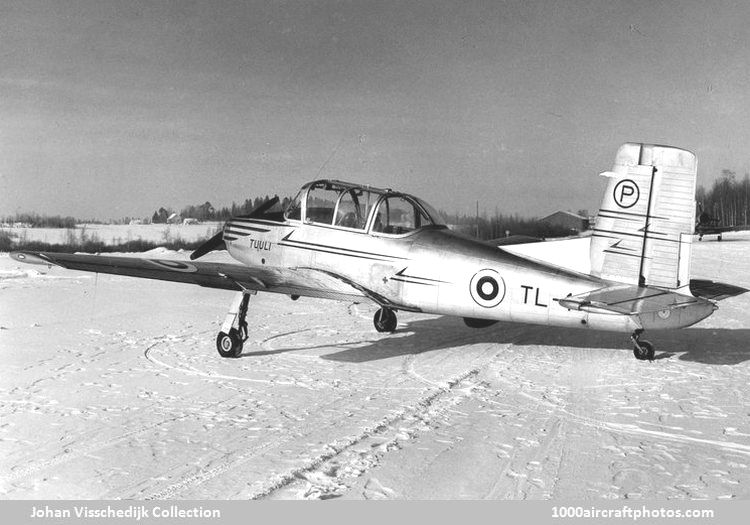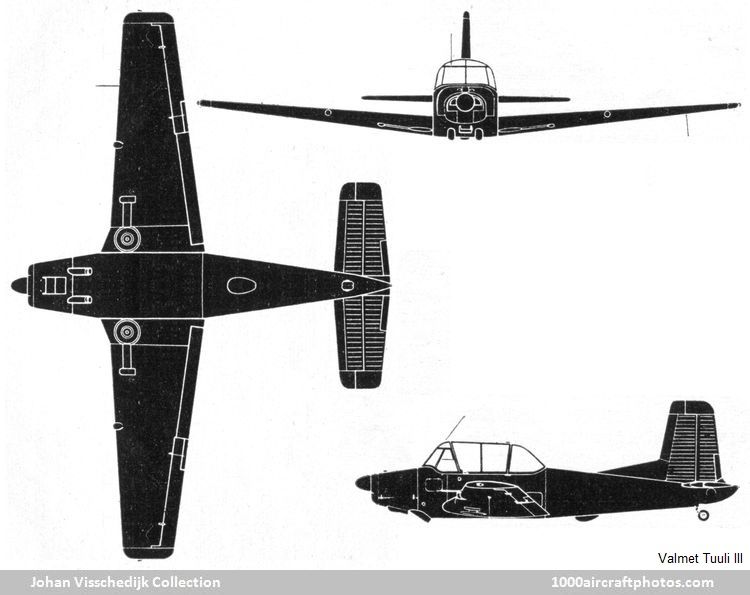06/30/2024. Remarks by Johan Visschedijk: "The Tuuli (Wind) III was designed by a team under the leadership of Elias Jarvineva, it had no relationship with the earlier Tuuli II. It was intended for the Finnish Air Force and would become available in the following versions. As a two-seat primary trainer with aerobatic qualities, a three-seat utility aircraft, a four-seat liaison aircraft, and, capable of accommodating a standard-size stretcher, as an ambulance aircraft. Development of the Tuuli III started in 1954, and on June 17, 1955, Valmet received an order for one prototype.
The wing was a light-alloy stressed-skin structure, with the main spar at 25% wing chord. The slotted-type ailerons were light-alloy covered, aerodynamically and mass-balanced, and fitted with balance tabs adjustable on ground. The landing-flaps could be opened to 40°, and the ailerons were coupled to the landing-flaps in such a fashion that with the landing-flaps fully open, the ailerons were deflected 15° downwards from the basic plane.
The fuselage was a light-metal stressed-skin construction. Two main frames, one at the instrument board and the other behind the cargo compartment, divide the fuselage into three separately manufactured parts, the front, middle and rear fuselage, which were riveted together. The extension of the main spar passed under the front seats in the fuselage, to which the fastening points of the main spar of the wings were attached. The fastening point of the auxiliary spar were connected with a reinforced fuselage rib.
The rudder and the elevators were stressed-skin structures with light-alloy covering. The fin and the stabilizer were attached to the reinforced ribs on the rear fuselage. Landing gear was of the tail wheel type, main wheels retractable. The front cockpit had two pilot seats arranged side-by-side and provided with complete dual controls. The main cockpit (pupil pilot) was on the port side.


